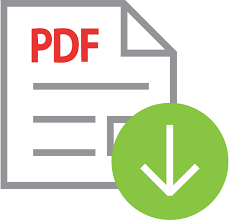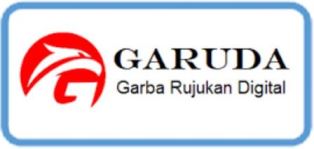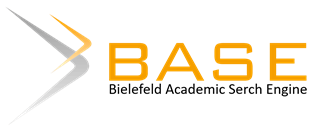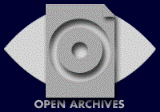AR-JarKom: Enhanced Mobility of Computer Network Learning
 ), Elfi Tasrif(2), Asrul Huda(3), Naseh Ulwan(4), Yulia Mandasari(5), Kyaw Zay Ya(6),
), Elfi Tasrif(2), Asrul Huda(3), Naseh Ulwan(4), Yulia Mandasari(5), Kyaw Zay Ya(6), (1) Universitas Negeri Padang
(2) Universitas Negeri Padang
(3) Universitas Negeri Padang
(4) Universitas Negeri Padang
(5) Akademi Pariwisata Bunda, Padang
(6) National Cheng Kung University, Taiwan
 Corresponding Author
Corresponding Author
DOI : https://doi.org/10.24036/voteteknika.v13i1.133205
Full Text:
 Language : en
Language : en
Abstract
The limited use of practicum tools in the laboratory is a problem in learning Computer Networks. In addition to the limited number, prices, and regulations also limit their use. Whereas Computer Network learning is very dependent on practicum tools. For this reason, this research aims to create an application that is able to present practicum tools whenever and wherever students want to learn Computer Networks. The application is called AR-JarKom which stands for Computer Network-based Augmented Reality in Indonesian. The AR-JarKom application is made using a waterfall model with the stages of needs analysis, design stages, development stages, testing stages, and maintenance stages. The result of this research is an AR-JarKom application that is able to display 3D objects and videos of practicum tools from Computer Network learning. Computer Network learning tools or videos can be displayed only by scanning images of tools in the printed or digital version of the labsheet. The AR-JarKom application can be run on Smartphone devices with the Android operating system. This makes student mobility to learn Computer Networks better without having to rely on practicum tools in the laboratory. Therefore, the results of this study are expected to be one of the qualified options in increasing the effectiveness of Computer Network learning. In the future, the AR-JarKom application will continue to be developed to improve its capabilities and existence.
References
E. Tasrif, “The Contribution of Smartphone Learning Models on Student Academic Performance: The Role of Mediating Effects,” Int. J. Inf. Educ. Technol., vol. 14, no. 10, pp. 1453–1460, 2024, doi: 10.18178/ijiet.2024.14.10.2176.
A. Mubai, Ambiyar, and D. Irfan, “Flipped Direct Instruction (FDI): Optimization of Practicum Learning Models,” Int. J. Inf. Educ. Technol., vol. 13, no. 11, pp. 1748–1754, 2023, doi: 10.18178/ijiet.2023.13.11.1985.
H. Hidayat et al., “The Empirical Analysis of Industrial Work Challenges in the Industrial Revolution 5.0 Towards a Grade Point Average (GPA) for Electronic Engineering Education Students,” Int. J. online Biomed. Eng., vol. 17, no. 9, pp. 21–34, 2021, doi: 10.3991/ijoe.v17i09.25679.
E. H. Medina-Sanchez, M. Mikusova, and M. Callejas-Cuervo, “An Interactive Model Based on a Mobile Application and Augmented Reality as a Tool to Support Safe and Efficient Mobility of People with Visual Limitations in Sustainable Urban Environments,” Sustainability, vol. 13, no. 17, p. 9973, Sep. 2021, doi: 10.3390/su13179973.
D. Irfan, L. Mursyida, and A. Mubai, “Implementation of Mobile Learning Design in the Flipped Direct Instruction Model to Increase Student Competency Using a Constructivist Approach,” J. Educ. Technol., vol. 7, no. 4, pp. 752–762, 2023, doi: 10.23887/jet.v7i4.69768.
V. S. Kornilov and I. A. Khanina, “Development of ICT competence in high school students when teaching physics using digital laboratories,” Rudn J. Informatiz. Educ., vol. 17, no. 2, pp. 146–152, Dec. 2020, doi: 10.22363/2312-8631-2020-17-2-146-152.
N. L. P. S. U. Putri and I. N. L. Jayanta, “Digital Practicum Module in Integrated Science for Elementary School Subjects,” J. Educ. Technol., vol. 7, no. 2, pp. 343–350, Jun. 2023, doi: 10.23887/jet.v7i2.61398.
I. M. Astra and L. H. Al Fitri, “Development Practicum Tools on Doppler Effect Material to Improve Student Learning Outcomes,” J. Appl. Math. Comput., vol. 4, no. 4, pp. 174–180, Nov. 2020, doi: 10.26855/jamc.2020.12.008.
D. M. K. Nugraheni, B. Noranita, S. Adhy, and A. K. Nugroho, “Adopting COBIT 2019 for Information Technology Risks in University Online Learning During COVID-19,” in COVID-19 Challenges to University Information Technology Governance, Cham: Springer International Publishing, 2022, pp. 191–209.
M. Fathurrohman and S. Ma’shum, “Information Technology (IT) Implementation in Improving Administration,” Int. J. Adv. Stud. Educ. Manag., vol. 1, no. 1, pp. 3–8, 2024, doi: 10.12233/ijasem.v99i1.paperID.
Merzy, “Fujikura 70S Fusion Splicer,” Tokopedia, 2025. https://www.tokopedia.com/merzy/fujikura-70s-fusion-splicer-cleaver-ct-50 (accessed Mar. 01, 2025).
E. Tasrif, A. Mubai, A. Huda, and K. Rukun, “Pemanfaatan media pembelajaran berbasis augmented reality menggunakan aplikasi Ar_JarKom pada mata kuliah instalasi jaringan komputer,” J. Konseling …, vol. 8, no. 3, pp. 217–223, 2020, doi: https://doi.org/10.29210/153400.
S. Sukirman, A. M. Sanjaya, and R. Selfi, “Lab work activities of computer network using virtual reality application,” TELKOMNIKA (Telecommunication Comput. Electron. Control., vol. 19, no. 1, p. 79, Feb. 2021, doi: 10.12928/telkomnika.v19i1.16502.
A. Mubai, K. Rukun, and A. Huda, “Augmented Reality ( AR ) -Based Learning Media on the Subject of Computer Network Installation,” J. Pendidik. dan Pengajaran, vol. 53, no. June, pp. 213–226, 2020, doi: 0.23887/jpp.v53i2.25943.
J. Song and J. Kook, “Visual SLAM Based Spatial Recognition and Visualization Method for Mobile AR Systems,” Appl. Syst. Innov., vol. 5, no. 1, p. 11, Jan. 2022, doi: 10.3390/asi5010011.
A. Huda et al., “Augmented Reality Technology as a Complement on Graphic Design to Face Revolution Industry 4.0 Learning and Competence: The Development and Validity,” Int. J. Interact. Mob. Technol., vol. 15, no. 5, pp. 116–126, 2021, doi: 10.3991/ijim.v15i05.20905.
S. Satrinawati, D. Irfan, and E. Efrizon, “Augmented Reality-Based Programming Using Atmega 2560 Microcontroller Trainer Kit Support,” J. Teknol. Inf. dan Pendidik., vol. 15, no. 2, pp. 110–121, 2023, doi: 10.24036/jtip.v15i2.670.
A. Mubai, Giatman, N. Jalinus, Syahril, and R. Abdullah, “The Effectiveness of Learning Media Based on Augmented Reality in Vocational Education : A Meta Analysis,” Ann. Rom. Soc. Cell Biol., vol. 25, no. 4, pp. 15749–15756, 2021.
E. Tasrif, A. Huda, H. K. Saputra, and A. Mubai, “Design of Server Performance Monitoring Application Integrated Administration Service System in Electronic Engineering Department,” J. Phys. Conf. Ser., vol. 1387, no. 1, 2019, doi: 10.1088/1742-6596/1387/1/012029.
B. A. Dewantara and A. Ghufron, “Artificial Intelligent in Education: The Development of ‘Disabel’ System to Analyze Student Learning Styles,” J. Phys. Conf. Ser., vol. 1233, no. 1, 2019, doi: 10.1088/1742-6596/1233/1/012083.
A. Mubai, K. Rukun, M. Giatman, and E. Edidas, “Needs Analysis in Learning Media Development Based on Augmented Reality (Ar) for Computer Network Installation Courses,” J. Pendidik. Teknol. Kejuru., vol. 3, no. 1, pp. 31–35, 2020, doi: 10.24036/jptk.v3i1.3723.
D. F. E. Naorbe and M. C. D. Galupar, “Recalibrating Technology in Education using the Augmented Reality Mobile Application,” 2015.
C. Rebollo, I. Remolar, V. Rossano, and R. Lanzilotti, “Multimedia augmented reality game for learning math,” Multimed. Tools Appl., vol. 81, no. 11, pp. 14851–14868, May 2022, doi: 10.1007/s11042-021-10821-3.
P. Prismar, R. Riyanto, E. Risdianto, M. F. R. Chandra, J. S. Macariola, and S. Farooque, “Development of Android-Based Augmented Reality Learning Media to Improve Learning Independence (Study on the Electric Motor Installation Subject for Class XI Students of Rejang Lebong Regency Vocational School),” IJOEM Indones. J. E-learning Multimed., vol. 3, no. 2, pp. 60–72, 2024, doi: 10.58723/ijoem.v3i2.231.
Z. Zhou, F. Oveissi, and T. Langrish, “Applications of augmented reality (AR) in chemical engineering education: Virtual laboratory work demonstration to digital twin development,” Comput. Chem. Eng., vol. 188, no. April, p. 108784, Sep. 2024, doi: 10.1016/j.compchemeng.2024.108784.
K. Mumtaz, M. M. Iqbal, S. Khalid, T. Rafiq, S. M. Owais, and M. Al Achhab, “An E-Assessment Framework for Blended Learning with Augmented Reality to Enhance the Student Learning,” EURASIA J. Math. Sci. Technol. Educ., vol. 13, no. 8, pp. 4419–4436, Jul. 2017, doi: 10.12973/eurasia.2017.00938a.
C.-H. Chen, “Impacts of augmented reality and a digital game on students’ science learning with reflection prompts in multimedia learning,” Educ. Technol. Res. Dev., vol. 68, no. 6, pp. 3057–3076, Dec. 2020, doi: 10.1007/s11423-020-09834-w.
T. A. Syed et al., “In-Depth Review of Augmented Reality: Tracking Technologies, Development Tools, AR Displays, Collaborative AR, and Security Concerns,” Sensors, vol. 23, no. 1, p. 146, Dec. 2022, doi: 10.3390/s23010146.
V. F. Ningrum, W. Sumarni, and E. Cahyono, “Development of Augmented Reality-Based Learning Media on Concept of Hydrocarbon to Improve Multi-representation Ability,” J. Penelit. Pendidik. IPA, vol. 7, no. SpecialIssue, pp. 256–265, Dec. 2021, doi: 10.29303/jppipa.v7iSpecialIssue.1038.
 Article Metrics
Article Metrics
 Abstract Views : 41 times
Abstract Views : 41 times
 PDF Downloaded : 15 times
PDF Downloaded : 15 times
Refbacks
- There are currently no refbacks.

This work is licensed under a Creative Commons Attribution-ShareAlike 4.0 International License.



.png)


.jpg)




